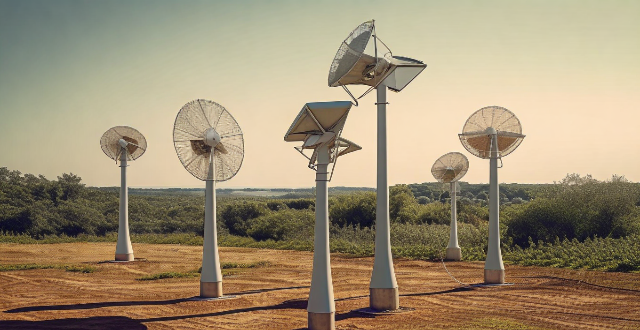This article explores the potential of electromagnetic motors for renewable energy production, highlighting their efficiency, reliability, scalability, and low maintenance costs. It also discusses their applications in wind turbines, hydroelectric power plants, solar power plants, and geothermal power plants. However, it acknowledges some potential disadvantages such as high initial cost, complex control systems, and compatibility issues that should be considered when evaluating their suitability for a particular project.

Can an Electromagnetic Motor be Used for Renewable Energy Production?
Introduction
Renewable energy production is becoming increasingly important as the world seeks to reduce its reliance on fossil fuels and mitigate the effects of climate change. One question that arises in this context is whether electromagnetic motors can be used for renewable energy production. In this article, we will explore this topic in detail.
What is an Electromagnetic Motor?
An electromagnetic motor is a type of motor that uses electromagnetic forces to convert electrical energy into mechanical energy. It consists of a rotor (the moving part) and a stator (the stationary part), which are separated by a small air gap. When an electric current passes through the stator windings, it creates a magnetic field that interacts with the magnetic field of the rotor, causing it to rotate.
How Can an Electromagnetic Motor Be Used for Renewable Energy Production?
There are several ways in which an electromagnetic motor can be used for renewable energy production:
1. Wind Turbines
Wind turbines use electromagnetic motors to generate electricity from wind energy. The rotor of the turbine is connected to the shaft of the generator, which contains an electromagnetic motor. As the wind turns the rotor, the electromagnetic motor inside the generator converts the mechanical energy into electrical energy.
2. Hydroelectric Power Plants
Hydroelectric power plants use electromagnetic motors to generate electricity from the kinetic energy of flowing water. The water flow turns the turbine, which is connected to the shaft of the generator containing an electromagnetic motor. The electromagnetic motor then converts the mechanical energy into electrical energy.
3. Solar Power Plants
Solar power plants use electromagnetic motors to track the movement of the sun and adjust the position of solar panels accordingly. This ensures that the panels are always facing the sun, maximizing their efficiency in capturing solar energy. The electromagnetic motor is used to move the support structure holding the solar panels, allowing them to follow the sun's path across the sky.
4. Geothermal Power Plants
Geothermal power plants use electromagnetic motors to pump hot water or steam from underground reservoirs to the surface, where it is used to generate electricity. The electromagnetic motor drives the pump, which circulates the hot fluid through a heat exchanger, transferring its thermal energy to a working fluid that drives a turbine-generator unit.
Advantages of Using Electromagnetic Motors for Renewable Energy Production
Using electromagnetic motors for renewable energy production has several advantages:
1. Efficiency
Electromagnetic motors are highly efficient in converting electrical energy into mechanical energy, making them ideal for use in renewable energy applications. They have low losses and high output power, resulting in increased overall system efficiency.
2. Reliability
Electromagnetic motors are known for their reliability and durability, making them well-suited for use in renewable energy systems. They can operate continuously for long periods without maintenance, reducing downtime and increasing system availability.
3. Scalability
Electromagnetic motors can be designed to meet a wide range of power requirements, from small-scale residential applications to large-scale industrial facilities. This makes them highly scalable and adaptable to different renewable energy projects.
4. Low Maintenance Costs
Compared to other types of motors, electromagnetic motors require less maintenance due to their simple design and robust construction. This results in lower operating costs over the lifetime of the system.
Disadvantages of Using Electromagnetic Motors for Renewable Energy Production
While there are many advantages to using electromagnetic motors for renewable energy production, there are also some potential disadvantages:
1. High Initial Cost
The initial cost of purchasing and installing an electromagnetic motor can be higher than other types of motors, especially for larger systems. However, this cost may be offset by lower operating costs and increased efficiency over time.
2. Complex Control Systems
Electromagnetic motors typically require complex control systems to manage their operation, which can add to the overall cost and complexity of the system. However, advancements in control technology have made these systems more affordable and user-friendly in recent years.
3. Compatibility Issues
In some cases, electromagnetic motors may not be compatible with existing infrastructure or equipment, requiring additional modifications or upgrades to integrate them into a renewable energy system. This can increase both the cost and complexity of the project.
Conclusion
In conclusion, electromagnetic motors can be effectively used for renewable energy production in various applications such as wind turbines, hydroelectric power plants, solar power plants, and geothermal power plants. Their efficiency, reliability, scalability, and low maintenance costs make them well-suited for these purposes. However, potential disadvantages such as high initial cost, complex control systems, and compatibility issues should also be considered when evaluating their suitability for a particular project.